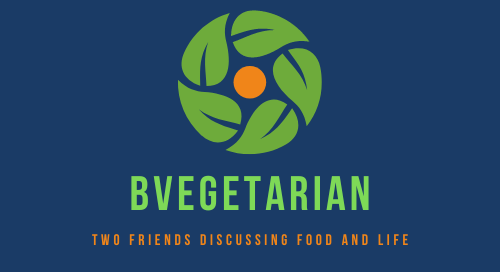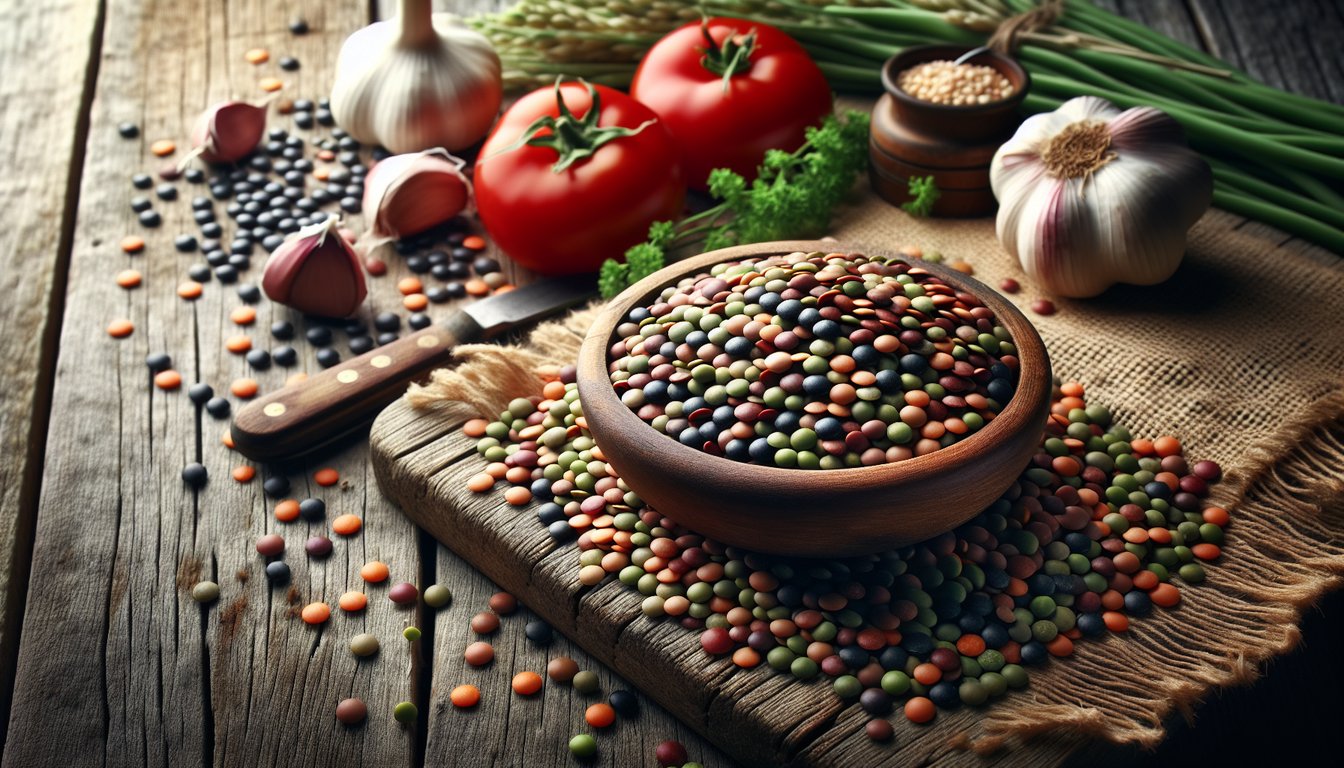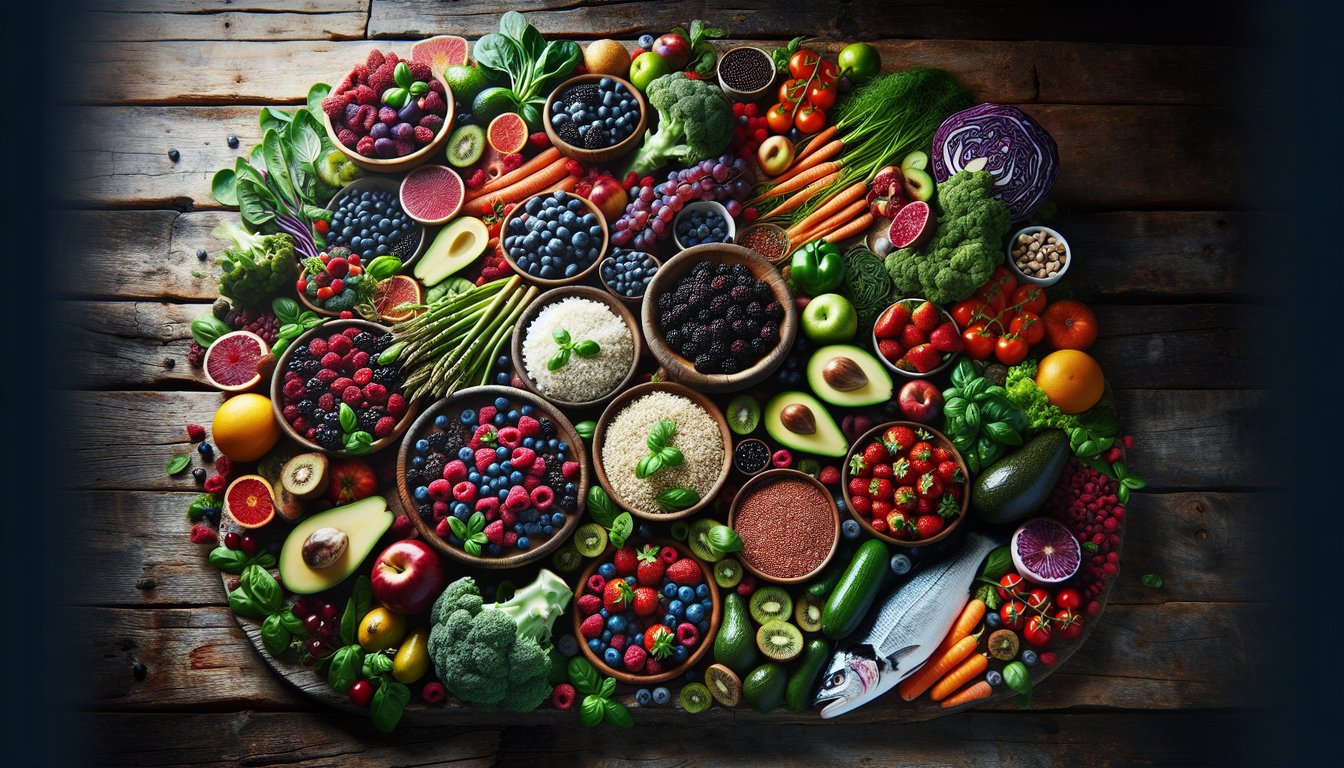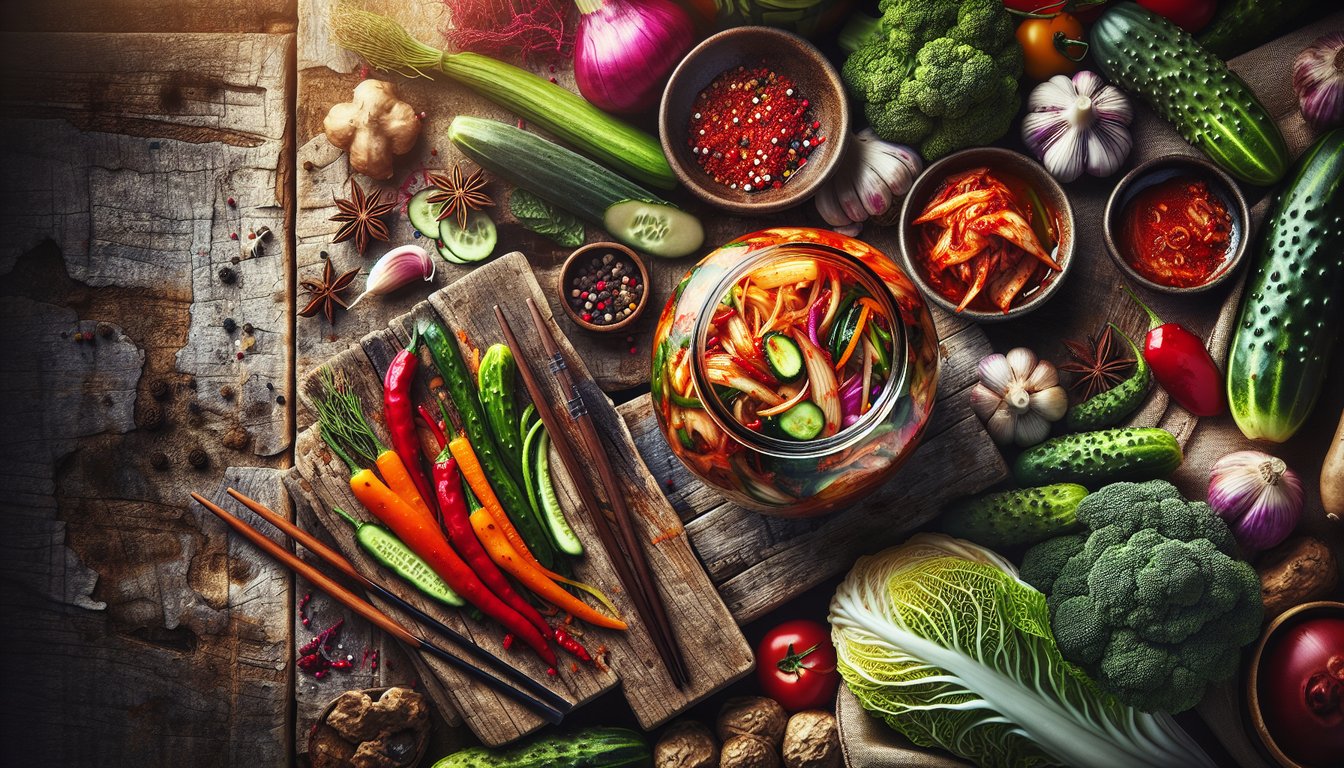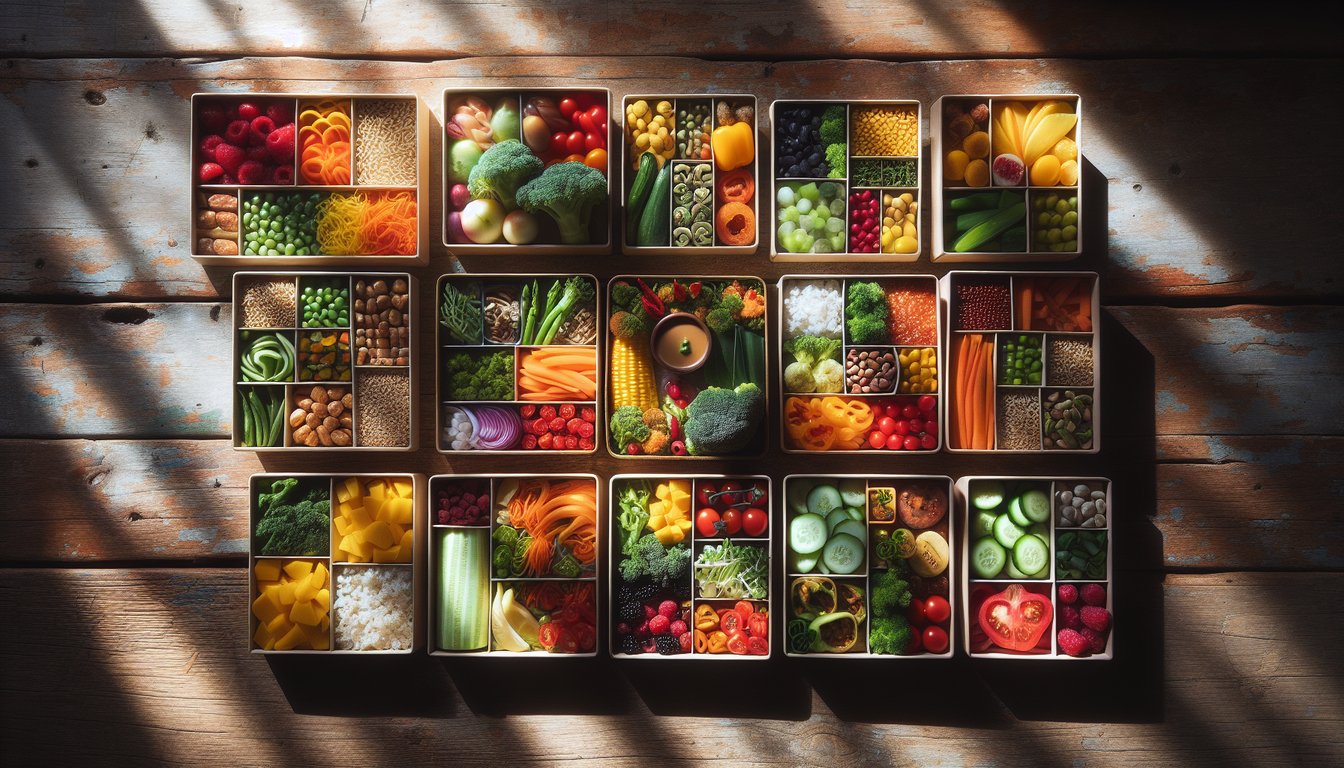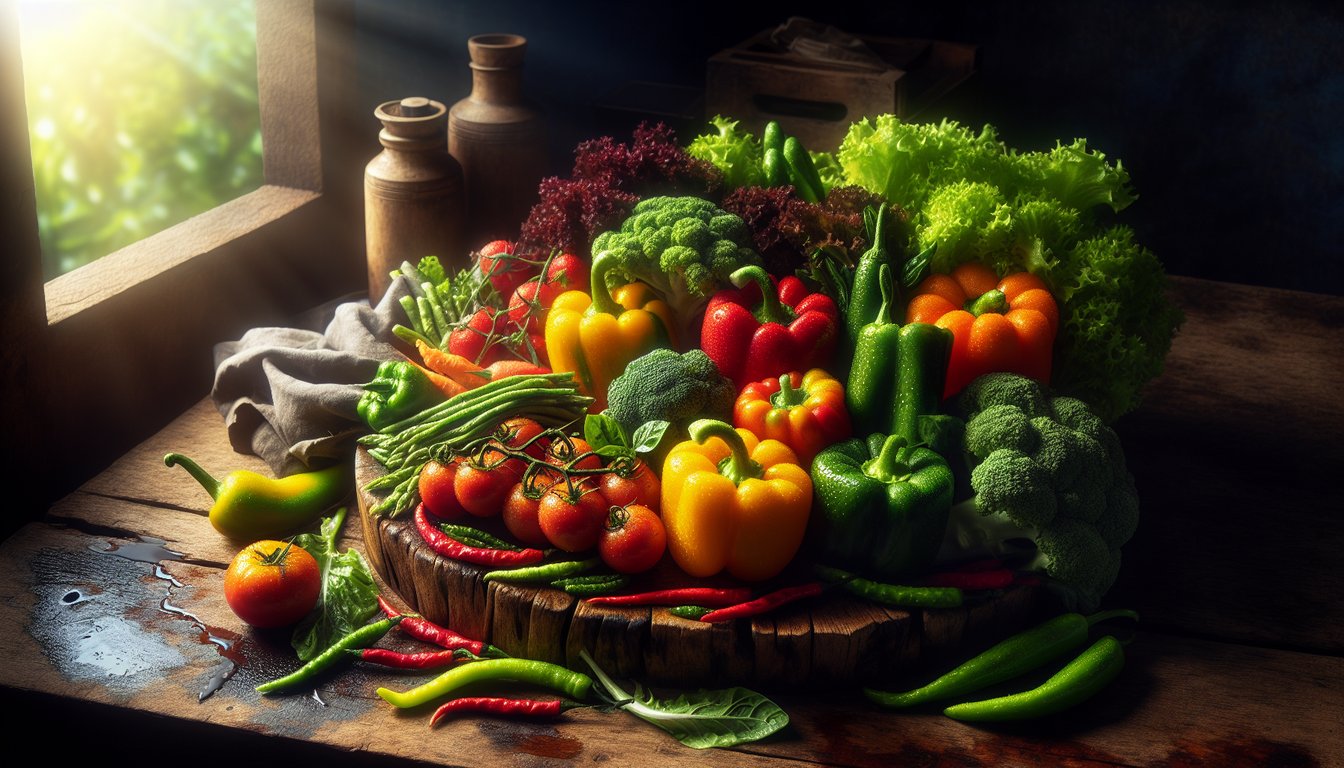Besan, also known as chickpea flour, is a culinary gem that deserves a prime spot in your pantry. Milled from dried chickpeas, this golden flour boasts a rich, earthy taste that effortlessly bridges savory and sweet dishes. Whether you’re exploring new plant-based recipes, trying to cut back on gluten, or simply aiming to enrich your meals with high-quality ingredients, besan can step in as a flavorful, protein-packed alternative to standard wheat flour. You can buy in online or from your local Indian Grocery store or even from Amazon.
Beyond offering a unique taste and texture, besan aligns beautifully with vegetarian cooking philosophies—versatile enough to tackle recipes from crunchy snacks to indulgent desserts. In this article, we’ll explore besan’s origins, its nutritional highlights, and why it’s such a popular choice in global cuisines.
Origins and Cultural Significance
Besan’s longstanding popularity traces back to South Asia and the Middle East, regions where chickpea cultivation has thrived for centuries. In Indian cuisine specifically, besan forms the foundation of many iconic dishes, such as pakoras (fried fritters) and kadhi (yogurt-based curry). It’s not limited to savory fare, though—besan also features in sweet treats like ladoos, a beloved festive dessert.
Its significance isn’t just culinary. Historically, chickpeas have been a cost-effective staple crop, rich in nutrients and accessible to a wide population. This made besan a go-to ingredient for families looking to stretch their meals while maintaining taste and nutrition. Over time, besan’s reputation for versatility and health benefits helped it travel beyond its traditional strongholds, finding enthusiastic fans in global fusion kitchens.
Nutritional Highlights
One of the main reasons besan stands out is its robust nutritional profile. According to data from the U.S. Department of Agriculture (USDA), chickpea flour contains substantial amounts of protein and dietary fiber—both crucial for a balanced vegetarian diet. Its protein content supports muscle maintenance and overall vitality, while fiber aids digestion and helps maintain steady blood sugar levels.
Moreover, besan’s naturally lower glycemic index makes it a beneficial alternative to refined wheat flours for individuals watching their carbohydrate intake. It’s also packed with essential vitamins and minerals, including iron, magnesium, and B vitamins. Because it’s gluten-free, besan can be a game-changer for anyone with gluten sensitivities or celiac disease. For more tips on balancing nutrition as a vegetarian, visit our Meal Planning Basics page.
Culinary Uses and Techniques
Binding Agent: In dishes where you need a sticky, cohesive texture—think veggie burgers or fritters—besan excels at holding ingredients together. This makes it a solid choice if you’re looking to avoid eggs or standard wheat flour.
Thickening Soups and Curries: Whisking a tablespoon or two of besan into broth is an easy way to add body to soups or curries. In Indian cuisine, besan is the star thickener in kadhi, a tangy yogurt-based curry often served over rice.
Sweet and Savory Baking: From pancakes and flatbreads to nutrient-dense brownies, besan’s unique flavor profile adds depth and a subtle nuttiness. You can even combine besan with other flours to create custom blends that suit your taste preferences.
Light Toasting for Extra Flavor: If you want to draw out besan’s aromatic qualities, try lightly toasting it in a dry pan on low heat. Once it starts turning a deeper shade of golden and you detect that nutty aroma, you’ll know it’s ready.
Incorporating Besan Into Your Routine
Keeping a bag of besan in your pantry can streamline your cooking routine. If you’re in a pinch and need a quick, protein-rich batter, besan steps up effortlessly. For those interested in exploring new snacks, try using besan in place of refined flours. Not only does it boost nutrition, but it also provides that satisfying density and structure without relying on gluten.
To maximize freshness, store your chickpea flour in an airtight container. Because of its natural fat content, besan can spoil if exposed to warmth or humidity for too long. Many cooks prefer refrigeration (or even freezing) if they don’t anticipate frequent use. If you’re eager to learn about other pantry essentials, check out our article on Veggie Pantry Staples for more ideas.
Three Recipes to Get You Started
Below are three tried-and-tested recipes showcasing besan’s versatility. Feel free to customize them to your taste or dietary needs.
1. Crispy Besan Pakoras (Snack)
- Ingredients: 1 cup besan, ½ tsp chili powder, ½ tsp salt, ¼ tsp turmeric, ~¾ cup water, sliced vegetables (onions, potatoes, spinach), oil for frying.
- Directions: Whisk the dry ingredients, then slowly add water until you get a thick batter. Dip the vegetables and fry in hot oil over medium-high heat until golden brown. Serve with chutney or ketchup.
2. Besan Ladoo with Cardamom (Dessert)
- Ingredients: 1 cup besan, 2 tbsp ghee, ½ cup powdered sugar, ¼ tsp cardamom powder, 1 tbsp chopped nuts (optional).
- Directions: Warm ghee in a pan, then add besan. Roast on low-medium heat, stirring continuously, until the flour turns light brown and aromatic (10-15 minutes). Turn off heat, stir in cardamom and let it cool slightly. Mix in powdered sugar. Shape into balls while still warm.
3. Kadhi (Savory Yogurt-Besan Curry)
- Ingredients: 1 cup yogurt, 2 tbsp besan, 2 cups water, salt, chili powder, 1 tbsp oil, ½ tsp mustard seeds, ½ tsp cumin seeds, and a pinch of asafoetida.
- Directions: Whisk yogurt, besan, water, salt, and chili powder. Heat oil in a pan, add mustard and cumin seeds, then asafoetida. When seeds sizzle, pour in the yogurt mixture. Cook on low heat for 10-15 minutes until it thickens. Serve with rice or roti.
- Added Bonus: You can add the besan pakoras to Kadhi and you get a new dish: Kadhi Pakora, that does so well with plain rotis and steamed rice.
Veggie Pantry Staples: Building a Solid Foundation for Vegetarian Cooking
Stocking a well-rounded pantry is one of the best ways to make vegetarian cooking easy, budget-friendly, and exciting. Having core ingredients on hand means fewer last-minute grocery runs and more time spent enjoying creative, home-cooked meals. Today, let’s walk through the essential veggie pantry staples that every vegetarian (and even flexitarian) kitchen should have. With these items, you can whip up delicious dishes any night of the week.
I have in my mind two lists of foods that I can cook. Special ones for the weekend and quick healthy comfort meals that can be ready in 30 minutes. Since I am from India and grew up in a household which wooden/coal stove and didn’t have the convenience of a microwave and always available source of heat, the meals were prepared twice a day. Breakfast was quick since we had to catch the school bus. It was usually stale bread from the night before and a tumbler of warm fresh milk. I was the one going to the farmer’s shed and watched him milk the cow and pour out 1 liter of warm frothy milk. I love just plain white rice with lentils and side of stir-fried green vegetables. Make me hungry to even thin about it.
Why Pantry Staples Matter
Think of your pantry as a personal toolkit. It’s not only a place to store food; it’s the starting line of every meal you create. When your shelves are stocked with versatile, nutritious ingredients, it’s easier to stay consistent with a vegetarian lifestyle. On those busy nights when you have no idea what to cook, your pantry comes to the rescue—beans for tacos, lentils for soup, or quick couscous for a hearty salad. Plus, buying in bulk can save you money and reduce packaging waste. We buy our stuff from Costco, Indian Grocery Stores and Asian Grocery Stores.
Legumes: The Protein Powerhouses
- Beans:
- Black Beans, Kidney Beans, and Chickpeas are some of the most versatile. They’re protein-rich, full of fiber, and can be used in soups, stews, salads, or even mashed into dips and spreads. Keep a few cans for quick meals, plus dried varieties if you have the time (or an Instant Pot) for batch cooking. I prefer the dried varieties but the only caveat here is to plan it the night before as some of them need overnight soaking in water.
- Lentils:
- Red, brown, and green lentils each have slightly different textures and flavors. Red lentils break down easily, making them great for creamy soups or Indian dals, while green and brown lentils hold their shape for salads, veggie burgers, and casseroles. No need to soak here. Just wash, boil in just enough water so that the end product is of the consistency that you are good with. Then a quick tempering with a few spices and aromatics like finely chopped onions, minced garlic, green chillis, mustard seeds etc.
- Split Peas:
- Split peas are perfect for that comforting pea soup or a satisfying stew on a chilly day. Plus, they cook fairly quickly compared to some other legumes.
Grains and Pasta: Your Carb Cornerstones
- Rice:
- Whether you prefer jasmine, basmati, or brown rice, it’s a good idea to keep a few types on hand. Brown rice offers more fiber, but white rice cooks faster. Pick your favorite or stock both for variety. With Insta Pot in every home, all you have to do it follow the instructions!
- Quinoa:
- This pseudo-grain is beloved for its protein content and nutty flavor. It’s a great base for salads, bowls, and even veggie burgers. Plus, it cooks in just about 15 minutes.
- Whole Wheat Pasta or Alternative Pastas:
- Pasta dishes are a vegetarian lifesaver when you’re short on time. Whole wheat pasta adds more nutrients, and there are also chickpea or lentil-based pastas if you want an extra protein boost. Again, follow the instructions on the package.
- Couscous and Bulgur:
- These grains cook super-fast—within minutes. They’re perfect for quick salads or as a side dish seasoned with herbs and olive oil. I will usually eat them with serving of stir-fried tofu with green beans. Sometimes, I use vegetable stock to cook them in. Makes it more flavorful.
Nuts, Seeds, and Nut Butters
- Nuts:
- Almonds, walnuts, and cashews not only provide healthy fats but also add a crunchy texture to salads and stir-fries. Keep them fresh in airtight containers or in the fridge. I don’t them use it very often but my kids make PBJ sandwich with them. No exactly PBJ but similar.
- Seeds:
- Chia, flax, and pumpkin seeds are rich in omega-3 fatty acids, protein, and minerals. Sprinkle them on oatmeal or yogurt, blend them into smoothies, or bake them into bread and muffins. My favorite is a combination of nuts and seeds that I sprinkle on top of my cottage cheese for breakfast.
- Nut and Seed Butters:
- Peanut butter, almond butter, tahini—these are versatile spreads that turn into dressings, marinades, and dips. Drizzle peanut sauce on roasted veggies or swirl tahini into soups for extra creaminess.
Flavor-Boosting Staples
- Spices & Herbs:
- A well-stocked spice rack can transform the simplest dish into something spectacular. Core staples might include cumin, paprika, turmeric, chili powder, oregano, basil, rosemary, and thyme. Add blends like garam masala or Italian seasoning to expand your flavor palette. Of course, I have a whole bunch of these spices in my pantry, and I use them often.
- Salt & Pepper:
- It might sound obvious, but quality salt (like sea salt or kosher salt) and freshly ground pepper are game changers for flavor. They’re also the foundation of most savory recipes.
- Cooking Oils:
- Olive oil is a must for dressings and light sautéing. Vegetable or canola oil handles higher-heat cooking. Coconut oil adds a sweet note to curries and baked goods. I prefer not to use Vegetable oils or Canola due to potential health risk, but Olive oil is a must. For bland applications, I use Avocado oil. Coconut oil has a tendency to freeze even in room temperature and I personally do not like its flavor unless in very fragrant and spicy South Indian Cooking.
- Onions & Garlic:
- While not exactly “pantry items” in the strict sense, onions and garlic store well at room temperature and form the aromatic base for countless vegetarian recipes. If possible, always keep them on hand!
Sauces, Condiments, and Stock
- Tomato Products:
- Canned tomatoes, tomato paste, or crushed tomatoes provide the base for hearty sauces, soups, and stews. Diced tomatoes can quickly become a pasta sauce with the right herbs. Costco is my friend here.
- Vegetable Broth or Bouillon:
- Veggie broth is essential for soups, risottos, and cooking grains. Low-sodium versions give you more control over the final seasoning.
- Soy Sauce, Tamari, or Coconut Aminos:
- These salty, umami-rich condiments are indispensable in stir-fries, marinades, and sauces. Tamari is a gluten-free alternative, while coconut aminos is soy-free and slightly sweeter.
- Vinegars:
- Apple cider vinegar, balsamic vinegar, and white wine vinegar brighten up dressings and marinades. Keep a variety to experiment with different flavor profiles.
- Mustard:
- A good mustard (Dijon or spicy brown) adds zing to dressings, glazes, and sandwiches. Plus, it can help emulsify homemade vinaigrettes.
Storage and Organization Tips
With this wide range of staples, organization can make or break your cooking flow. Store dry goods like beans, lentils, and grains in labeled, airtight containers to preserve freshness and prevent pantry pests. Rotate older items to the front so you use them first, reducing waste. For nuts and seeds, consider keeping them in the fridge or freezer to prolong their shelf life—they can go rancid if left in a warm pantry for too long.
Once you’re stocked and organized, set aside time each week to plan a few meals. You don’t need to schedule every single dish, but having a rough idea of how you’ll use your veggies and pantry items prevents food from going unnoticed in the back of a cupboard.
Making the Most of Your Veggie Pantry
A well-stocked veggie pantry is your ticket to stress-free, delicious cooking. Whether you’re whipping up a quick rice and bean bowl, blending nuts into creamy sauces, or exploring new flavors with exotic spices, these staples will ensure you’re never at a loss for a meatless meal. Keep experimenting! That’s half the fun of a vegetarian lifestyle—discovering unexpected combinations and flavors that leave you excited for the next cooking adventure.
By investing a little time and energy into building your pantry, you’ll set yourself up for success on your vegetarian journey. When inspiration strikes (or hunger calls), you’ll have everything you need to create nourishing meals without extra trips to the store. So, open those cabinets, take stock, and start planning your next tasty, plant-powered dish!
Beyond the Block: Exploring Innovative Tofu Transformations in Global Cuisines
When one thinks of tofu, the image that often comes to mind is a plain, white block of soy goodness – a blank slate in the culinary arts. However, this versatile ingredient has been a staple in various international cuisines for centuries, finding its way into a plethora of dishes that tantalize taste buds across the globe. From bustling street markets of Asia to the avant-garde restaurants of Europe, tofu’s transformative nature allows it to soak up flavors and complement a myriad of ingredients, making it a favorite among chefs and home cooks alike.
The History of Tofu
Tofu, also known as bean curd, has a long and storied history that dates back over 2,000 years to ancient China during the Han Dynasty. Legend has it that tofu was accidentally discovered when a Chinese cook curdled soy milk by adding nigari (magnesium chloride), a coagulant derived from seawater. Over time, this discovery spread throughout East Asia, becoming a staple in the diets of various cultures, including Japan, Korea, and Vietnam. Tofu’s integration into these diverse cuisines is a testament to its versatility and adaptability. In Japan, tofu is known as “tofu” and is an integral part of the traditional diet, featuring prominently in dishes such as miso soup and agedashi tofu. Korea’s “dubu” and Vietnam’s “dau phu” also highlight tofu’s importance in regional culinary traditions. Its journey from a simple soy product to a global health food phenomenon illustrates its enduring appeal and nutritional value.
The Manufacturing of Tofu
The process of making tofu involves several key steps that transform soybeans into the versatile and nutritious food we enjoy today. It begins with soaking dried soybeans in water to rehydrate them. Once softened, the soybeans are ground into a slurry and cooked. This mixture is then filtered to separate the soy milk from the okara, the fibrous pulp. The soy milk is heated and a coagulant, typically nigari or calcium sulfate, is added to curdle the milk. The curds are then pressed to remove excess whey, forming blocks of tofu. The firmness of the tofu can be controlled by adjusting the pressing time and pressure, resulting in different textures, from silken to extra firm. Modern manufacturing processes have mechanized and streamlined these steps, allowing for large-scale production while maintaining the traditional methods that ensure high quality and consistency.
The Uses of Tofu
Tofu’s mild flavor and diverse textures make it a versatile ingredient in a wide range of dishes across various cuisines. In Asian cuisine, it is commonly used in soups, stir-fries, and stews. Silken tofu is often blended into soups like Korean “soondubu jjigae” or used in desserts due to its creamy consistency. Firm and extra-firm tofu are ideal for stir-frying, grilling, or baking, as they hold their shape well and absorb flavors from marinades and spices. Beyond its traditional uses, tofu has become a popular meat substitute in Western vegetarian and vegan diets, providing a high-protein, low-fat alternative to animal products. It can be crumbled to mimic ground meat, sliced and marinated for “steaks,” or blended into smoothies and sauces. The health benefits of tofu, including its high protein content, low calorie count, and rich supply of essential amino acids and minerals, further underscore its growing popularity as a nutritious and adaptable food choice.
Asia: The Tofu Trailblazer
Tofu, or bean curd, has its roots deeply embedded in Asian gastronomy. It’s no surprise that some of the most innovative uses of tofu can be found here.
- Mapo Tofu from China: This Sichuan classic dish combines soft tofu with spicy chili and bean paste, creating a fiery sauce that is both numbing and addictive. As Serious Eats explains, “The best mapo tofu is powerfully spicy with both conventional ‘heat’ and the characteristic ‘málà’ (numbing spiciness) flavor of Sichuan cooking.”
- Agedashi Tofu from Japan: A light and crisp exterior gives way to the silken texture of tofu inside when it’s prepared in the agedashi style. This dish is then served in a dashi-based broth, presenting a delicate umami flavor that Just One Cookbook captures so well in their traditional recipe.
- Sundubu-jjigae from Korea: This hot and spicy stew features uncurdled tofu as its centerpiece. Known for its comforting qualities and rich, hearty flavor profile, it’s a popular dish highlighted by Maangchi, a well-known source for authentic Korean recipes.
The Americas: Tofu Without Borders
Tofu’s journey doesn’t end in Asia. Its versatility has allowed it to travel across oceans and integrate into the diverse cuisines of the Americas, where it is reinvented in myriad forms.
· Buffalo Tofu Wings
Ingredients:
– 1 block firm tofu, pressed and cut into bite-sized pieces
– 1/2 cup all-purpose flour (or gluten-free flour)
– 1/2 cup unsweetened plant-based milk (such as almond or soy milk)
– 1 cup breadcrumbs (panko works well)
– 1/2 teaspoon garlic powder
– 1/2 teaspoon onion powder
– Salt and pepper to taste
– 1/2 cup buffalo sauce
– 2 tablespoons vegan butter, melted
– Fresh celery sticks and vegan ranch dressing for serving
Instructions:
- Preheat the oven to 425°F (220°C). Line a baking sheet with parchment paper.
- Set up a breading station: place the flour in one bowl, plant-based milk in a second bowl, and breadcrumbs mixed with garlic powder, onion powder, salt, and pepper in a third bowl.
- Dip each tofu piece into the flour, then the plant-based milk, and finally coat it with the breadcrumb mixture. Place the breaded tofu pieces on the prepared baking sheet.
- Bake for 25-30 minutes, flipping halfway through, until the tofu pieces are golden brown and crispy.
- While the tofu is baking, combine the buffalo sauce and melted vegan butter in a large bowl.
- Once the tofu is done baking, toss the tofu pieces in the buffalo sauce mixture until well coated.
- Serve immediately with fresh celery sticks and vegan ranch dressing.
· Tofu Sloppy Joes
Ingredients:
– 1 block firm tofu, pressed and crumbled
– 1 tablespoon olive oil
– 1 small onion, finely chopped
– 1 bell pepper, finely chopped
– 2 cloves garlic, minced
– 1/2 cup ketchup
– 1/4 cup barbecue sauce
– 1 tablespoon soy sauce
– 1 tablespoon brown sugar
– 1 tablespoon apple cider vinegar
– 1 teaspoon smoked paprika
– Salt and pepper to taste
– Burger buns
– Pickles (optional, for serving)
– Coleslaw (optional, for serving)
Instructions:
- Heat olive oil in a large skillet over medium heat. Add the crumbled tofu and cook until it begins to brown, about 5-7 minutes.
- Add the chopped onion, bell pepper, and garlic to the skillet. Cook until the vegetables are softened, about 5 minutes.
- In a small bowl, whisk together the ketchup, barbecue sauce, soy sauce, brown sugar, apple cider vinegar, smoked paprika, salt, and pepper.
- Pour the sauce mixture over the tofu and vegetables. Stir to combine and simmer for about 10 minutes, allowing the flavors to meld and the sauce to thicken.
- Toast the burger buns in a separate skillet or toaster.
- Spoon the tofu mixture onto the toasted buns. Serve with pickles and coleslaw if desired.
Europe: An Artistic Tofu Rendition
In Europe, where traditional dishes are often deeply rooted in history, tofu is making waves among those who seek to push the boundaries of classic cuisine. Here, tofu is not merely a substitute; it’s an inspiration.
Tofu is incredibly versatile and can be adapted to fit various cuisines, including European flavors. Here are three delicious European tofu recipes to try:
· Mediterranean Tofu Salad
Ingredients:
– 1 block firm tofu, pressed and cubed
– 2 tablespoons olive oil
– 1 teaspoon dried oregano
– 1 teaspoon dried basil
– Salt and pepper to taste
– 1 cup cherry tomatoes, halved
– 1 cucumber, diced
– 1 red bell pepper, diced
– 1/4 red onion, thinly sliced
– 1/2 cup Kalamata olives, pitted and halved
– 1/4 cup feta cheese (optional, or use vegan feta)
– Fresh basil leaves, for garnish
Dressing:
– 1/4 cup olive oil
– 2 tablespoons red wine vinegar
– 1 teaspoon Dijon mustard
– 1 clove garlic, minced
– Salt and pepper to taste
Instructions:
- Preheat the oven to 400°F (200°C). Toss the tofu cubes with olive oil, dried oregano, dried basil, salt, and pepper. Spread the tofu on a baking sheet and bake for 25-30 minutes, until golden and crispy.
- In a large bowl, combine cherry tomatoes, cucumber, red bell pepper, red onion, and Kalamata olives.
- In a small bowl, whisk together the dressing ingredients: olive oil, red wine vinegar, Dijon mustard, garlic, salt, and pepper.
- Add the baked tofu to the vegetable mixture and toss with the dressing.
- Sprinkle with feta cheese and fresh basil leaves. Serve immediately or chill for later.
· Italian Tofu Piccata
Ingredients:
– 1 block firm tofu, pressed and sliced into 1/2-inch thick cutlets
– 1/2 cup all-purpose flour (or gluten-free flour)
– Salt and pepper to taste
– 2 tablespoons olive oil
– 1/4 cup vegan butter
– 1/4 cup capers, drained
– 1/2 cup vegetable broth
– 1/4 cup lemon juice (about 2 lemons)
– 1/4 cup dry white wine (optional)
– 2 tablespoons fresh parsley, chopped
– Lemon slices, for garnish
Instructions:
- Season the flour with salt and pepper. Dredge the tofu cutlets in the flour, shaking off excess.
- Heat olive oil in a large skillet over medium-high heat. Add the tofu cutlets and cook until golden brown on both sides, about 4-5 minutes per side. Remove tofu from the skillet and set aside.
- In the same skillet, melt the vegan butter. Add capers and sauté for 1-2 minutes.
- Stir in the vegetable broth, lemon juice, and white wine (if using). Bring to a simmer and cook for 5 minutes, allowing the sauce to reduce slightly.
- Return the tofu cutlets to the skillet and spoon the sauce over them. Cook for another 2-3 minutes until heated through.
- Garnish with fresh parsley and lemon slices. Serve with pasta or steamed vegetables.
Other International Recipes
Tofu is a versatile ingredient that can be transformed into a variety of delicious dishes. Here are a few easy and tasty tofu recipes to try:
· Crispy Tofu Stir-Fry
Ingredients:
– 1 block firm tofu, pressed and cubed
– 2 tablespoons soy sauce
– 1 tablespoon cornstarch
– 2 tablespoons vegetable oil
– 1 bell pepper, sliced
– 1 carrot, julienned
– 1 cup broccoli florets
– 2 cloves garlic, minced
– 1 tablespoon ginger, minced
– 3 tablespoons soy sauce
– 1 tablespoon hoisin sauce
– 1 tablespoon rice vinegar
– 1 teaspoon sesame oil
– Sesame seeds (optional)
– Cooked rice (for serving)
Instructions:
- Toss the tofu cubes with 2 tablespoons of soy sauce and cornstarch until evenly coated.
- Heat vegetable oil in a large skillet or wok over medium-high heat. Add tofu and cook until crispy and golden brown on all sides. Remove and set aside.
- In the same skillet, add bell pepper, carrot, and broccoli. Stir-fry for about 5 minutes until vegetables are tender-crisp.
- Add garlic and ginger, and cook for another 1-2 minutes until fragrant.
- In a small bowl, mix together 3 tablespoons soy sauce, hoisin sauce, rice vinegar, and sesame oil.
- Return tofu to the skillet and pour the sauce over the tofu and vegetables. Stir to coat everything evenly and cook for another 2-3 minutes.
- Serve over cooked rice and sprinkle with sesame seeds if desired.
· Tofu Scramble
Ingredients:
– 1 block firm tofu, crumbled
– 1 tablespoon olive oil
– 1 small onion, diced
– 1 bell pepper, diced
– 2 cloves garlic, minced
– 1 teaspoon turmeric
– 1 teaspoon ground cumin
– Salt and pepper to taste
– Fresh spinach or kale (optional)
– Salsa and avocado (for serving)
Instructions:
- Heat olive oil in a large skillet over medium heat. Add onion and bell pepper, and sauté until softened, about 5 minutes.
- Add garlic, turmeric, and cumin, and cook for another 1-2 minutes.
- Add crumbled tofu to the skillet and stir well to combine with the vegetables and spices.
- Cook for about 5-7 minutes, stirring occasionally, until the tofu is heated through and slightly golden.
- If using, add spinach or kale and cook until wilted.
- Season with salt and pepper to taste.
- Serve with salsa and avocado on the side.
· Baked Tofu Nuggets
Ingredients:
– 1 block firm tofu, pressed and cut into nugget-sized pieces
– 2 tablespoons soy sauce
– 1 tablespoon olive oil
– 1/4 cup nutritional yeast
– 1/4 cup breadcrumbs
– 1 teaspoon garlic powder
– 1 teaspoon onion powder
– 1/2 teaspoon paprika
– Salt and pepper to taste
Instructions:
- Preheat oven to 400°F (200°C) and line a baking sheet with parchment paper.
- In a bowl, toss the tofu pieces with soy sauce and olive oil until well-coated.
- In another bowl, mix together nutritional yeast, breadcrumbs, garlic powder, onion powder, paprika, salt, and pepper.
- Coat each tofu piece in the breadcrumb mixture and place on the prepared baking sheet.
- Bake for 25-30 minutes, flipping halfway through, until the tofu nuggets are crispy and golden brown.
- Serve with your favorite dipping sauce.
· Tofu Tacos
Ingredients:
– 1 block firm tofu, crumbled
– 1 tablespoon olive oil
– 1 small onion, diced
– 2 cloves garlic, minced
– 1 teaspoon ground cumin
– 1 teaspoon chili powder
– 1/2 teaspoon smoked paprika
– Salt and pepper to taste
– Corn or flour tortillas
– Toppings: shredded lettuce, diced tomatoes, avocado, salsa, vegan sour cream
Instructions:
- Heat olive oil in a skillet over medium heat. Add onion and sauté until softened, about 5 minutes.
- Add garlic, cumin, chili powder, and smoked paprika, and cook for another 1-2 minutes.
- Add crumbled tofu to the skillet and stir well to combine with the spices and onion.
- Cook for about 5-7 minutes, stirring occasionally, until the tofu is heated through and slightly crispy.
- Season with salt and pepper to taste.
- Warm tortillas and fill with tofu mixture.
- Top with your favorite taco toppings and enjoy!
· Tofu and Vegetable Curry
Ingredients:
– 1 block firm tofu, pressed and cubed
– 2 tablespoons vegetable oil
– 1 onion, diced
– 2 cloves garlic, minced
– 1 tablespoon ginger, minced
– 1 tablespoon curry powder
– 1 teaspoon ground cumin
– 1 teaspoon ground coriander
– 1 can (14 oz) coconut milk
– 1 cup vegetable broth
– 1 cup diced tomatoes (fresh or canned)
– 1 cup diced carrots
– 1 cup broccoli florets
– 1 cup snap peas
– Fresh cilantro (for garnish)
– Cooked rice (for serving)
Instructions:
- Heat vegetable oil in a large pot over medium heat. Add onion and sauté until softened, about 5 minutes.
- Add garlic, ginger, curry powder, cumin, and coriander, and cook for another 1-2 minutes until fragrant.
- Add coconut milk, vegetable broth, and diced tomatoes to the pot. Stir well to combine.
- Bring to a simmer and add carrots. Cook for about 5 minutes.
- Add broccoli florets, snap peas, and tofu cubes. Simmer for another 10 minutes until the vegetables are tender.
- Season with salt and pepper to taste.
- Serve over cooked rice and garnish with fresh cilantro.
Lentils Unveiled: A Short Guide to Usage, Delectable Recipes, Health Benefits, and Where to Find Them
The humble lentil, despite its small size, packs a powerful punch in the culinary and nutritional world. This versatile legume is a staple in various cuisines across the globe, offering a myriad of uses, mouth-watering recipes, and incredible health benefits. Whether you’re a seasoned chef or a home cook, lentils are a must-have in your pantry. Let’s dive deeper into understanding this nutritional powerhouse and explore where you can find the best quality lentils.
Usage of Lentils
Lentils are incredibly versatile and can be used in an array of dishes. Whether you’re aiming for a hearty meal or a light snack, lentils can fit the bill. Here are some common ways to use lentils:
- Soups and Stews: Lentils add bulk and nutrition to soups and stews, making them more filling and flavorful.
- Salads: Cooked lentils can be tossed with vegetables and a light dressing for a nutritious salad.
- Side Dishes: Simple preparations of lentils with herbs and spices make for excellent sides.
- Burgers and Patties: Lentils can be mashed and combined with other ingredients to form vegetarian burgers or patties.
Delectable Lentil Recipes
- Classic Lentil Soup
Ingredients:
- 1 cup of lentils
- 1 onion, chopped
- 2 carrots, diced
- 2 celery stalks, chopped
- 2 garlic cloves, minced
- 6 cups of vegetable broth
- Salt and pepper to taste
- 1 bay leaf
- 2 tablespoons of olive oil
Instructions:
- Heat the olive oil in a large pot over medium heat. Add the onion, carrots, and celery. Cook until softened, about 5 minutes.
- Stir in the garlic and cook for another minute.
- Add the lentils, vegetable broth, bay leaf, salt, and pepper. Bring to a boil, then reduce the heat and let it simmer until the lentils are tender, about 30 minutes.
- Remove the bay leaf and serve hot.
- Lentil Salad with Lemon Vinaigrette
Ingredients:
- 1 cup of cooked lentils
- 1 cucumber, diced
- 1 red bell pepper, diced
- 1/4 cup of chopped red onion
- 1/4 cup of chopped parsley
- 2 tablespoons of lemon juice
- 3 tablespoons of extra-virgin olive oil
- Salt and pepper to taste
Instructions:
- Mix the lemon juice, olive oil, salt, and pepper in a small bowl to make the vinaigrette.
- In a large bowl, combine the cooked lentils, cucumber, red bell pepper, red onion, and parsley.
- Pour the vinaigrette over the salad and toss to combine. Serve chilled or at room temperature.
Health Benefits of Lentils
Lentils are not only versatile but also incredibly nutritious. Here are some key health benefits of consuming lentils:
- Rich in Protein: Lentils are an excellent source of plant-based protein, making them ideal for vegetarians and vegans. According to Healthline, a single cup of cooked lentils provides about 18 grams of protein.
- High in Fiber: Lentils are packed with dietary fiber, which aids in digestion and promotes a healthy gut. A cup of cooked lentils contains over 15 grams of fiber.
- Low in Fat: Lentils are naturally low in fat, making them a heart-healthy food option.
- Rich in Iron: Lentils provide a significant amount of iron, essential for transporting oxygen throughout the body.
- Loaded with Vitamins and Minerals: Lentils are a good source of important nutrients like folate, magnesium, and potassium.
Where to Find Quality Lentils
Finding high-quality lentils is crucial for both taste and nutritional benefits. Here are some reliable sources where you can purchase top-notch lentils:
- Amazon: Offers a wide range of lentils, including organic and specialty varieties.
- Whole Foods Market: Known for its high-quality organic products, Whole Foods offers a great selection of lentils.
- Trader Joe’s: This popular grocery chain provides a variety of lentils at affordable prices.
- Bob’s Red Mill: Renowned for its high-quality grains and legumes, including various types of lentils.
Berry Bonanza: How Nature’s Tiny Powerhouses Can Boost Your Health and Well-Being
Bursting with vibrant colors and bursting with flavor, berries are more than just a delightful addition to any meal or snack. These nature’s tiny powerhouses pack an incredible nutritional punch that can play a pivotal role in improving your overall health and well-being. From the humble blueberry to the exotic acai, berries are loaded with vitamins, antioxidants, and fiber, making them an essential part of a balanced diet. In this blog post, we’ll explore the myriad health benefits of incorporating berries into your daily routine and discover why these small but mighty fruits are your greatest allies in achieving a healthier lifestyle.
The Nutritional Wonders of Berries
Berries are celebrated for their heart-healthy benefits and their ability to fend off numerous diseases. The antioxidants found in berries, such as vitamin C, vitamin E, and flavonoids, contribute to reducing oxidative stress and inflammation in the body. Let’s delve into the specific ways these juicy jewels can enrich your health:
- Antioxidant Powerhouses: Berries are high in antioxidants like anthocyanins, which protect your cells from free radical damage, potentially reducing the risk of chronic diseases.
- Fiber-Rich: The dietary fiber in berries helps to maintain a healthy digestive system and contributes to satiety, which can aid in weight management.
- Vitamin C: A potent immune booster, vitamin C in berries can help fend off colds and infections and is crucial for the growth and repair of body tissues.
- Skin Health: The vitamins and antioxidants in berries can contribute to healthier skin and may reduce the effects of aging.
Berries and Brain Health
Perhaps one of the most exciting areas of research is the impact of berries on brain health. Studies have shown that the bioactive compounds in berries can improve cognitive function and may lower the risk of age-related memory loss. Regular consumption of berries is associated with delayed cognitive aging by up to 2.5 years.
Blueberries: The Brain Superfood
Among all berries, blueberries stand out for their high levels of gallic acid, which is known for its neuroprotective properties. They have been extensively studied for their potential to enhance neuronal signaling and support brain health.
Fighting Disease with Berries
The fight against chronic diseases receives a tasty ally in the form of berries. These small fruits are not just a treat for the taste buds but also a formidable weapon in combating various health conditions.
- Cardiovascular Health: Berries have been linked to improved heart health. The American Heart Association acknowledges the role of berries in reducing heart disease risk factors.
- Diabetes Management: The low glycemic index of berries makes them excellent for blood sugar regulation, an essential factor in diabetes management.
- Cancer Prevention: The phytochemicals in berries may play a role in reducing the risk of cancer, as suggested by research.
Incorporating Berries into Your Diet
Wondering how you can include more berries in your daily meals? It’s simpler than you might think. Berries can be easily integrated into your diet in a variety of delicious ways:
- Add a handful of mixed berries to your morning oatmeal or cereal.
- Blend berries into smoothies for a nutritious and refreshing drink.
- Top off your salads with a burst of color and flavor by adding berries.
- Use berries as natural sweeteners in baking and desserts.
Berries are not only a healthful choice but also incredibly versatile. Whether eaten fresh, frozen, or dried, they can enhance the flavor and nutrition of numerous dishes. By making berries a regular part of your diet, you’re taking a delicious step towards better health.
Antioxidants: Nature’s Powerhouse and how to unleash it.
The quest for optimal health has led many to the doorstep of nature’s most potent offerings—superfoods. Touted for their dense concentrations of vitamins, minerals, antioxidants, and other essential nutrients, these natural marvels stand out in the food kingdom. In this guide, we’ll journey through the exciting world of superfoods, highlighting the myriad of ways they can enrich your health and vitality, and how you can easily incorporate them into your everyday meals.
The Allure of Antioxidants
Antioxidants are the body’s guardians, protecting cells from the damaging effects of free radicals. Superfoods like blueberries, dark chocolate, and pecans are rich in antioxidants and can help safeguard your health. These vibrant edibles do not just fend off cellular damage; they’re also known for their potential to reduce the risk of chronic diseases, support brain health, and even slow the signs of aging.
Nutrient-Dense and Delicious
The beauty of superfoods lies in their nutrient density—a small serving packs a significant nutritional punch. Foods such as chia seeds and kale are prime examples of nutrient-packed items that are both versatile and flavorful. Including these in your diet means you’re feeding your body with an assortment of beneficial compounds, such as omega-3 fatty acids from chia seeds, which are essential for heart and brain health.
Seamless Integration into Your Diet
Introducing superfoods into your daily regimen need not be a chore. Here’s how to effortlessly blend them into your meals:
- Smoothie Bowls: Start your day with a smoothie bowl topped with nuts, seeds, and fresh fruits like acai and goji berries, known for their impressive antioxidant properties.
- Salads: Elevate your salads by adding super greens such as spinach and arugula, coupled with a sprinkle of quinoa for a protein boost.
- Snacking: Swap out processed snacks for raw nuts, such as almonds and walnuts, which are excellent sources of healthy fats and vitamins.
Superfood Supplements
If whole foods are not always accessible, superfood supplements can be a reliable alternative. Powders like spirulina and wheatgrass are simple to add to smoothies or juices, offering a concentrated dose of nutrients.
The Heart of the Matter
Heart disease remains one of the leading causes of death worldwide, but superfoods like avocados and oats contain heart-healthy fats and fibers that can help manage cholesterol levels and improve heart function. Incorporating these foods into your diet is a delicious way to show your heart some love.
Superfoods for Weight Management
The concept of “eating your way to a slimmer figure” may seem counterintuitive, yet superfoods like green tea and grapefruit have been studied for their weight management properties. They can aid in boosting metabolism and providing satiety, which can help curb overeating.
Kimchi: A Step-by-Step Guide to creating your own!
Welcome to the colorful tapestry of Korean cuisine, where every dish is a testament to a rich cultural heritage and an array of complex. In this culinary journey, we will be exploring the time-honored tradition of making kimchi, a fermented dish revered not only for its bold taste but also for its impressive health benefits. Kimchi has been a staple in Korean diets for centuries, and now you can bring this savory, tangy, and spicy delight to your table. Let’s embark on this fermenting adventure together!
The Art of Kimchi Fermentation
Fermentation is a natural process through which microorganisms like bacteria and yeast convert carbohydrates into alcohol or acids. This not only preserves the food but also creates beneficial enzymes, b-vitamins, Omega-3 fatty acids, and various strains of probiotics. The Harvard Medical School highlights the importance of fermented foods like kimchi in contributing to gut health, an essential component of overall well-being.
Gathering Your Ingredients
Creating kimchi begins with selecting fresh, high-quality ingredients. Here’s what you’ll need:
- Napa cabbage
- Daikon radish
- Carrots
- Green onions
- Garlic
- Ginger
- Korean red pepper flakes (gochugaru)
- Fish sauce or a vegan alternative like soy sauce
- Sea salt
- Sugar (optional)
Preparing the Vegetables
Begin by cutting the Napa cabbage into quarters and removing the cores. Then, chop it to your desired size. Soak the pieces in a brine made from water and sea salt, ensuring the cabbage is fully submerged. Leave it to sit for about 2 hours, which will soften the leaves and start the fermentation process.
The Kimchi Paste
The heart of kimchi’s flavor lies in its paste. To create this essential component, you’ll blend garlic, ginger, sugar (if using), and fish sauce into a smooth paste. Then, add the Korean red pepper flakes, adjusting the quantity to suit your taste for heat. If you’re looking for a vegetarian version, Saveur’s Vegan Kimchi recipe is a great resource for substitutes.
Combining and Fermenting
Once your cabbage has finished soaking, rinse it thoroughly and let it drain. While it’s draining, cut the daikon radish, carrots, and green onions into matchstick-sized pieces. Next, mix these vegetables with the prepared kimchi paste until they are all evenly coated. Now, it’s time to massage the paste into the cabbage leaves, ensuring every leaf is covered.
After the cabbage is fully dressed with the kimchi paste and additional vegetables, pack it tightly into a clean jar, pressing down to reduce any air pockets. Leave some space at the top to allow for expansion. Seal the jar and let it sit at room temperature for 1-5 days. Check it daily, pressing down the vegetables to keep them submerged in the brine that will form. Once your kimchi is bubbling and tastes tangy, it’s ready to be refrigerated. The New York Times explores the global love affair with kimchi and its adoption in Western cuisine.
Enjoying Your Kimchi
Kimchi can be enjoyed in countless ways – as a side dish, in stews, on sandwiches, or even as a topping on your favorite pizza. The versatility of kimchi is one of its many appealing qualities, and experimenting with it in your cooking can bring a delightful Korean twist to your meals. Remember, the longer kimchi ferments, the more intense its flavors become. Enjoy it at various stages to discover your preferred balance of tangy and spicy.
10 Simple Ways to Reduce Your Sugar Intake for a Healthier Life

Varieties of Sugar Welcome to the realm of conscious consumption, where the sweetness of life doesn’t come from sugar-laden treats but from the vitality of a healthy lifestyle. Navigating through the maze of modern nutrition can be daunting, especially when it comes to sugar, an ingredient so ubiquitous in our food supply. But fear not! We’re here to the secrets of reducing sugar intake, ensuring you can enjoy the flavors of life while keeping your health in check. Join us as we provide you with a roadmap to a sweeter life, free of the excess sugar that often creeps into our diets.
The Bitter Truth About Sugar
The consumption of excessive sugar is linked to numerous health issues, including obesity, type 2 diabetes, and heart disease. The World Health Organization (WHO) recommends that added sugars should make up less than 10% of total energy intake. Unfortunately, many of us surpass this recommendation without even realizing it, as sugar hides in countless processed foods. To understand why it’s crucial to reduce our intake, let’s look at some compelling evidence:
- A study published in JAMA Internal Medicine found a significant relationship between a high-sugar diet and an increased risk of dying from heart disease.
- Research by the Harvard School of Public Health has demonstrated that drinks sweetened with sugar contribute to the obesity epidemic in the United States.
- The WHO notes that sugar is one of the main causes of dental caries (cavities), a preventable oral health problem.
Ten Steps to Sweet Freedom
Reducing sugar doesn’t have to be a sour experience. Here’s a list of ways you can cut back on sugar while still savoring the joy of eating:
1. Read Labels Like a Pro
Become a detective in the grocery store aisles. Check product labels for sugar content, and be aware of its many aliases—fructose, sucrose, maltose, and more. Look out for “no added sugars” and don’t be fooled by “healthy” marketing claims.
2. Savor the Natural Sweetness
Fruits offer natural sugars along with essential fibers, vitamins, and minerals. Embrace the sweetness of apples, berries, and melons, which can satisfy your sugar cravings without the negative health effects of refined sugars.
3. Beware of Liquid Sugars
Soft drinks, fruit juices, and specialty coffees can be sugar bombs in disguise. Opt for water, herbal teas, or black coffee to quench your thirst without the added sweeteners.
4. Home-Cooked for the Win
Preparing meals at home puts you in control of the ingredients, including sugar. Home-cooked meals can be tailored to your taste while keeping sugar content to a minimum.
5. Spice It Up
Spices like cinnamon, nutmeg, and vanilla can provide sweet nuances to your meals without the need for sugar. Get creative with your spice rack and discover new flavor profiles.
6. Choose Whole Foods
Whole foods are minimally processed and typically lower in sugar. Incorporate more vegetables, grains, proteins, and healthy fats into your diet for a balanced and low-sugar lifestyle.
7. Smart Snacking
Snacks don’t have to come from a package. Try nuts, seeds, or yogurt topped with fruit for a satisfying and nutritious snack that won’t spike your sugar levels.
8. Moderation is Key
Indulging in a sweet treat occasionally is fine. The key is moderation. Set limits for yourself and stick to them to keep sugar consumption in check.
9. Mindful Eating
Take the time to enjoy your meals without distraction. Eating mindfully makes you more aware of your body’s hunger and fullness signals, helping you avoid overeating and excessive sugar intake.
10. Support System
Embark on your low-sugar journey with friends or family. Having a support system can help you stay committed and make the process more enjoyable.
Reducing sugar intake is a journey of awareness and intention. By incorporating these simple strategies into your daily life, you can diminish your sugar consumption, enhance your health, and discover a world of flavors beyond the sweet trap of sugar. Start your journey today and taste the difference for yourself!
A Beginner’s Guide to Vegetarian Meal Prep: Simple Strategies for Healthy, Plant-Based Eating
Welcome to the vibrant world of plant-based eating, where every meal is a celebration of flavors and a step towards a healthier lifestyle. As a beginner in vegetarian meal prep, you may feel overwhelmed by the plethora of options and information available. Fear not, as we embark on this delicious journey, you’ll discover that prepping your meals can be as easy as it is gratifying. Not only will you be nurturing your body with nutrient-dense foods, but you’ll also contribute to a more sustainable planet. Let’s dive into some essential tips and tricks to kick-start your plant-based meal prep journey.
Understanding Vegetarian Nutrition
Before we jump into meal prep, it’s crucial to understand the nutritional landscape of a vegetarian diet. A well-planned vegetarian diet can meet all your dietary needs and provide numerous health benefits. According to the Mayo Clinic, essential nutrients for vegetarians include protein, calcium, iron, vitamin B12, and omega-3 fatty acids. Here’s how you can ensure your meals are balanced:
- Integrate a variety of proteins like beans, lentils, tofu, and tempeh.
- Include calcium-fortified plant milks and yogurts for strong bones.
- Consume iron-rich foods such as spinach, fortified cereals, and lentils, along with vitamin C sources to enhance absorption.
- Consider vitamin B12-fortified products or supplements, as this vitamin is primarily found in animal products.
- Incorporate flaxseeds, chia seeds, or walnuts to get your omega-3s.
Planning Your Meals
Meal planning is a cornerstone of a stress-free vegetarian lifestyle. Start by sketching out a weekly menu that includes a variety of foods to keep things exciting and nutritious. Begin with familiar dishes and gradually introduce new ingredients to expand your palate. Here’s a simple framework to build your meal plans:
- Choose your protein sources for the week.
- Select a few vegetable and whole grain options.
- Decide on breakfast choices that are quick and satisfying.
- Plan some snacks to keep the hunger pangs at bay.
Batch Cooking & Storage
One of the secrets to successful meal prep is batch cooking. Set aside a few hours during the weekend to cook large portions of staples like grains, beans, and vegetables. Store these in the refrigerator or freezer in airtight containers to maintain freshness. Having these ready-to-go components on hand will make assembling meals throughout the week a breeze.
Simple & Delicious Vegetarian Recipes
The excitement of vegetarian meal prep lies in the endless array of recipes you can create. From hearty stews to vibrant salads, the options are infinite. To get you started, here are a few simple recipes that are both nutritious and delicious:
- Chickpea Salad – Packed with protein and fresh veggies, perfect for a quick lunch.
- Masoor Dal – A one-pot lentil curry that’s both comforting and flavorful.
- Tofu Stir-Fry – A versatile dish that can incorporate any leftover veggies in your fridge.
Tips for a Smooth Meal Prep Experience
To ensure your meal prep goes off without a hitch, here are some final tips:
- Invest in quality meal prep containers that are microwave and freezer safe.
- Prepare and store dressings or sauces separately to keep meals fresh.
- Keep a well-stocked pantry with spices and staples to add variety to your meals.
- Embrace leftovers by transforming them into new meals.
- Stay inspired by following vegetarian blogs and social media accounts for new ideas.
Embarking on your vegetarian meal prep adventure should now feel less daunting and more exciting. Remember, it’s about progress, not perfection. Experiment with flavors, adjust your prep routine to fit your lifestyle, and most importantly, enjoy the delicious benefits of plant-based eating. Bon appétit!
Mastering the Art of Veggie Prep: A Beginner’s Guide to Preparing Vegetables for Cooking
Welcome to the exciting world of vegetable preparation, where each slice and dice can lead to an extraordinary meal. When embarking upon your culinary journey, mastering the art of veggie prep is a critical step that can elevate your cooking from simple to exceptional. Whether you’re a novice in the kitchen or looking to refine your skills, we’ve got you covered essential techniques and tips. Let’s transform those vibrant, earthy produce items into the star components of your dishes!
Understanding Vegetable Prep Essentials
Before diving into the specifics, it’s important to recognize that proper vegetable preparation is more than just a means to an end. It’s a craft that can affect the flavour, texture, and nutritional value of your meals. Each vegetable comes with its unique set of rules for handling and prepping, which, when followed, can make all the difference in your culinary creations.
Choosing the Right Tools
It all begins with the right tools. A sharp chef’s knife and a sturdy cutting board are fundamental to efficient and safe vegetable preparation. Remember, a dull knife can be more dangerous, as it requires more force and can slip easily. Additionally, investing in a few specialty tools like a good-quality vegetable peeler, a mandoline, and a pair of kitchen shears can speed up your prep time and open up new possibilities in slicing and dicing.
Washing and Cleaning
Vegetables carry remnants of dirt and sometimes pesticides, so a thorough wash under cold running water is a must. For leafy greens, a salad spinner can help remove excess water after rinsing. Use a soft brush for root vegetables like potatoes and carrots to scrub away any stubborn dirt. Peeling may not always be necessary, as many nutrients are found in the skin, but it can be done based on your recipe requirements or personal preference.
Mastering Cutting Techniques
Chopping vegetables is an art form that can influence cooking time and the dish’s final appearance. Here are some common cutting techniques you should know:
- Julienne: This technique involves cutting vegetables into long, thin strips, ideal for stir-fries and salads.
- Dice: Dicing creates uniform cubes and is excellent for soups, stews, and when an even cook is desired.
- Chiffonade: A method used for leafy vegetables and herbs where they are rolled and sliced into thin ribbons.
For more intricate details on cutting techniques, Fine Cooking offers a mini-class that can help sharpen your skills.
Blanching and Steaming
Some vegetables benefit from a quick blanching or steaming before their final cook. Blanching involves plunging vegetables into boiling water for a short time and then immediately into ice water to halt the cooking process. This method can enhance the color, make peeling easier, and prepare veggies for freezing. Steaming, on the other hand, is a gentle cooking method that preserves nutrients and is perfect for tender-crisp results in dishes like stir-fries.
Roasting and Sautéing
Roasting brings out sweetness and depth of flavor in vegetables. A high heat in the oven caramelizes the natural sugars, creating a deliciously rich taste. The Bon Appétit guide on how to roast vegetables is a fantastic resource for beginners.
Sautéing is a quick cooking method using a small amount of oil or butter over medium-high heat. It’s ideal for softer vegetables that cook quickly, such as bell peppers, onions, and mushrooms. Keep the pieces uniformly sized for even cooking and don’t overcrowd the pan to allow for proper heat circulation.
Embarking on your veggie prep journey can be as rewarding as it is delicious. By honing these essential skills, you’re setting the stage for healthier, more flavorful meals that are sure to impress. Happy chopping!

- Beans:

